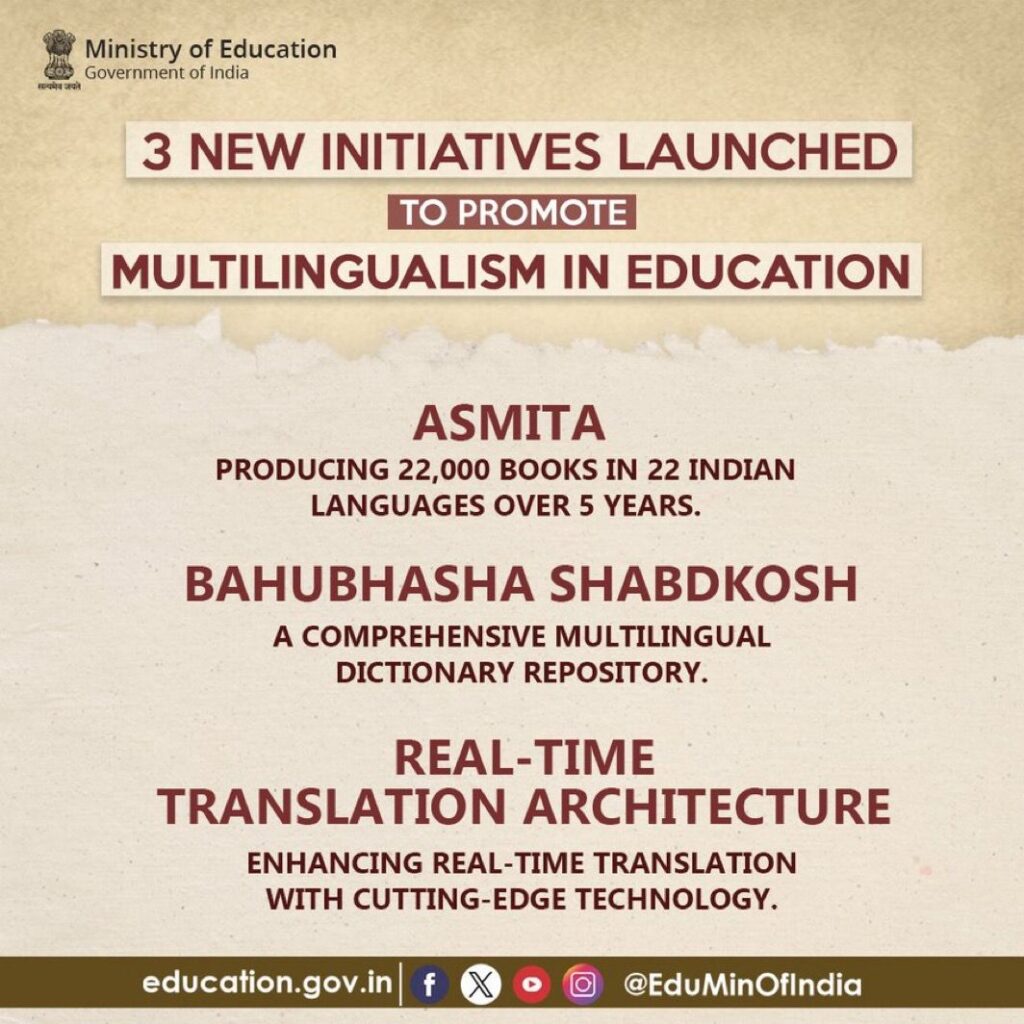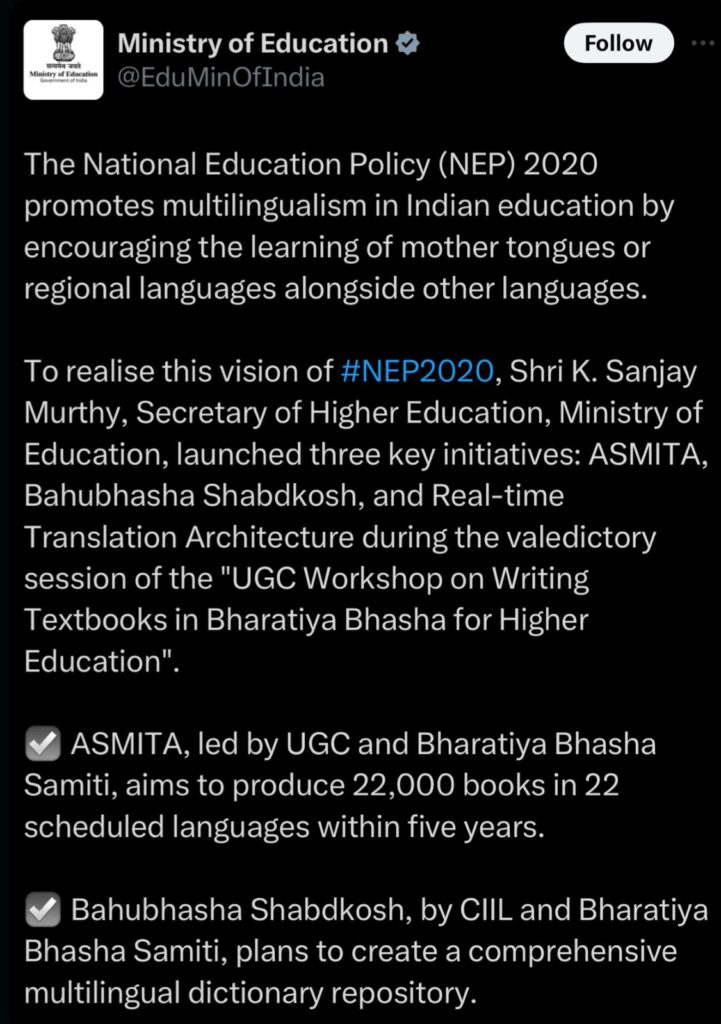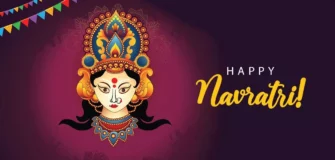A multilingual future: The vision of NEP 2020 sees the light with ASMITA, Bahubhasha Shabdkosh, and real-time
Share
The NEP 2020 envisages reshaping the very landscape of Indian education in its advocacy of multilingualism. Compounding this vision, a few days back, Shri K. Sanjay Murthy, Secretary Higher Education, Ministry of Education, unveiled the following unique new initiatives: ASMITA, Bahubhasha Shabdkosh, and Real-time Translation Architecture. These initiatives were launched during the valedictory session of the “UGC Workshop on Writing Textbooks in Bharatiya Bhasha for Higher Education.

ASMITA: A Literacy Revolution in 22 Languages
The first of these initiatives is ASMITA, which is done under the joint collaboration between the UGC and Bharatiya Bhasha Samiti. ASMITA stands for “Aatmavishwas Se Bharatiya Shiksha Tak” (From Self-Confidence to Indian Education), attempting to produce an impressive 22,000 books in 22 scheduled Indian languages in just five years. This will be a good solution to the problem of long years by getting high-quality educational resources in regional languages that will help the students all over the country to have a textbook in their mother tongues. Learning material in various languages will extendedly help place emphasis on India’s rich linguistic heritage and students’ motivational power towards this through ASMITA.
Bahubhasha Shabdkosh: Building a Multilingual Dictionary Repository
Another such major initiative being taken up is Bahubhasha Shabdkosh, which CIIL with the Bharatiya Bhasha Samiti is to collaborate on with the objectives of bringing all country-developed multilingual dictionaries to one platform. In fact, it is envisaged to make this a large, open repository of dictionaries related to the needs of learners, teachers and researchers. By standard dictionaries, we necessarily also mean excluding specialized dictionaries, which too are to be compiled separately for as many different school, college and university subjects as also professional and research fields. Bahubhasha Shabdkosh aims to reduce the language divide and to promote interaction among people of different linguistic communities by providing a large and reliable medium of linguistic knowledge.
Real-time Translation Architecture: A Technological Leap
The third challenge, Real-time Translation Architecture, is yet another innovative project of the National Educational Technology Forum (NETF) in collaboration with the Bharatiya Bhasha Samiti. Now this project is building state-of-the-art real-time translation in Bharatiya Bhasha. Real-time Translation Architecture with the power of artificial intelligence and machine learning enables instantaneous, error-less translations across languages. This technology will be particularly useful in academic settings in which students and teachers will be able to switch between languages seamlessly, augmenting the learning experience and promoting linguistic diversity.

Commitment to Multilingual Education
This inauguration is a step forward in the realization of the vision enshrined in NEP 2020. Reiterating the use of mother tongues and regional languages in the teaching-learning process, this policy is expected to accentuate the welfare in terms of linguistic diversity and cultural preservation provided by these languages. These initiatives will infuse pride and confidence in India’s rich linguistic heritage.
With the NEP 2020 as the guiding force in Indian education transformation, creating Shiksha Parikrama, building the Bahubhasha Shabdkosh, setting up the Real-time Translation Architecture, and much more will hold a pivot on framing the multilingual future. These initiatives are made for furthering access to quality educational resources served to learners in their language, for an inclusive learning environment that shall be free of biases and ensured to be equitable. It is a collective effort between the Ministry of Education, UGC, CIIL, NETF, and Bharatiya Bhasha Samiti to embrace a vibrant, multilingual education landscape that takes pride in the extensive indigenous linguistic diversity of India.







